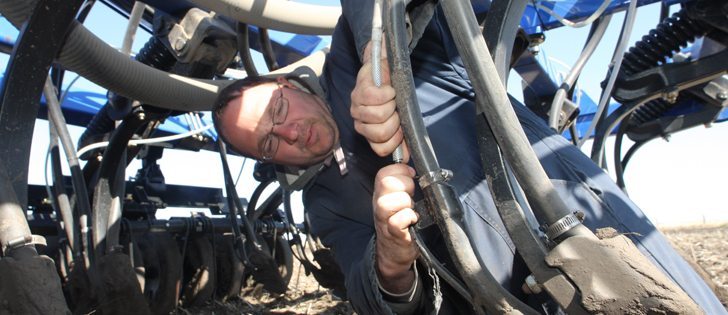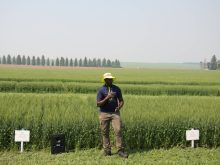Early start to U.S. seeding blamed | Urea, ammonium sulfate hard to find on Prairies
Farmers are nervous about tight fertilizer supplies in the countryside.
“There is a lot of speculation that there may not be enough to go around,” said Kevin Bender, president of the Western Canadian Wheat Growers Association.
Directors from all three prairie provinces are telling Bender that urea and ammonium sulfate are particularly hard to find.
“There’s even rumours that some of that pre-bought stuff won’t be available,” he said.
Viterra and Yara Belle Plaine were contacted for this story but did not respond in time for deadlines.
Read Also

Agri-business and farms front and centre for Alberta’s Open Farm Days
Open Farm Days continues to enjoy success in its 14th year running, as Alberta farms and agri-businesses were showcased to increase awareness on how food gets to the dinner plate.
However, Saskatchewan fertilizer retailer who requested anonymity confirmed that supplies of the two key nutrients are indeed tight.
A number of factors are contributing to the shortage, including American farmers starting seeding about a month earlier than usual, which caught dealers and wholesalers off guard.
U.S. farmers also intend to plant four million more acres of corn than last year, and corn is a fertilizer intensive crop.
However, the biggest reason behind this year’s shortage dates back to 2008.
Fertilizer warehouses in the United States typically buy offshore product and then sell it to dealers, who in turn sell it to farmers. In the past, they would have stockpiled supplies.
However, that all changed when fertilizer prices spiked in the fall of 2008 and then crashed, causing huge losses for warehouses full of high-priced product.
Warehouses now refuse to take a position on fertilizer unless dealers or farmers have taken a position.
“This year nobody was buying so they weren’t filling their sheds,” said the Saskatchewan fertilizer retailer.
The warehouses simply couldn’t keep up with demand when U.S. farmers hit the fields early and decided to plant a lot more corn.
“The only place in North America to buy from was Canadian manufacturers,” he said, which has resulted in a shortage of product and rising prices north of the border.
Documents accompanying Agrium’s first quarter results for 2012 support this explanation.
“Our retail business capitalized on one of the earliest starts to the North American spring season in history, achieving its highest ever sales and EBITDA (earnings before interest, taxes, depreciation, and amortization) for a first quarter,” Agrium president Mike Wilson said in a news release.
Crop nutrient sales reached $1 billion for the quarter, up 46 percent from the same quarter last year, primarily because of a 43 percent surge in sales volumes.
Higher prices also contributed to the strong first quarter results. Urea prices in the U.S. Gulf increased by more than 80 percent from the end of January to mid-April.
Agrium noted that North American imports of offshore urea were down about 10 percent for the first eight months of the 2011-12 fertilizer year “due to buyer caution regarding inventory management for the spring season, which contributed to a supply deficit.”
Unplanned manufacturing plant outages in North America and Pakistan and delays in new projects in Qatar and Algeria contributed to the urea shortfall.
Bender hopes the supply shortage sorts itself out in a hurry because this is no time for farmers to be cutting back on fertilizer when grain prices are so high.
The Saskatchewan retailer said growers who pre-booked their fertilizer will be covered at his retail outlet because it has a storage shed and unfilled contracts with manufacturers.
However, it will be taking a cautious approach when it comes to supplying walk-up traffic until more supplies are secured.
















